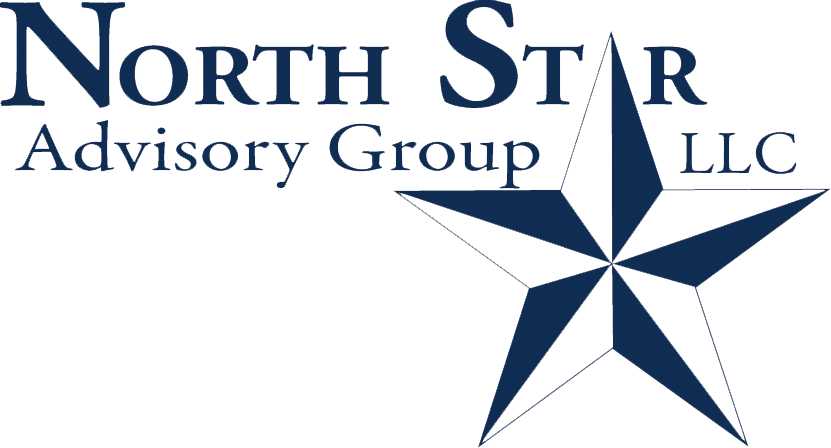Each month we ask clients to spend a few minutes reading through our newsletter with the goal of raising their investor IQ. This month we focus on the massive amounts of student loan forgiveness and tax law changes due to the recent passage of the Inflation Reduction Act.
Pending Adjustable-Rate Mortgage problem?
The long-awaited student loan forgiveness package of $10,000-$20,000 per borrower from the Biden administration was announced on August 22, 2022. Many loan holders are confused or have misconceptions around the comprehensive language. We are encouraging our clients to take a moment to read through our summary and share it with their families. While repayments have been delayed through December 31, 2022, all borrowers should review their loans carefully as some may need to take action.
The Biden administration has continued to need more time to sort through various borrowers and create large blocks for forgiveness. Outside of the new package, more than $32 billion in total forgiveness has already been provided during Biden’s presidency. NSAG’s opinion is that while this type of wide-sweeping forgiveness will further add to inflationary pressures, ultimately, it is corporations and shareholders that will benefit from the continued spending that otherwise would have soon been redirected back at student loan payments.
While it is true that the Supreme Court could overturn Biden’s sweeping loan forgiveness, the Biden administration is already planning several back-up options to push through their forgiveness plan.
One-time $10,000-$20,000 of debt forgiveness
- It is estimated that 25% of borrowers will receive automatic forgiveness. The other 75% of borrowers will need to provide their income data for forgiveness via an application that the Biden administration will launch in the coming weeks. The application will be available before the loan payment pause ends on Dec. 31. Anyone who would like to be notified when the application is open can sign up on the Department of Education’s website.
- $10,000 for individuals who didn’t receive Pell Grants
- $20,000 for individuals who did receive Pell Grants
- This criteria skews more forgiveness to those who were in greater financial need when the loans were issued.
- These borrowers represent roughly 60% of the student loan borrower population and the Department of Education estimates that roughly 27 million borrowers with Pell Grants will be eligible. This group alone could receive up to $540,000,000,000!
- Forgiveness only applies to loans taken out before July 2022. Qualifying loans only include Parent PLUS loans, graduate loans and current student loans. These loans must still be Federally backed and not refinanced into private loans. Finally, only loans for individuals earning less than $125,000 or families earning less than $250,000 will be eligible for the forgiveness. According to senior officials with the Biden administration, a borrower will qualify if their income in either the 2020 or 2021 tax years was below these income caps.
- The rate of interest can vary significantly for each loan based on their date of issue. It is unclear what loans will be selected for forgiveness.
Income-driven repayment loan forgiveness plan changes
- First, there is an increased threshold for non-discretionary income. Currently, the threshold that’s shielded from being used for loan repayments is 150% of the poverty level, or $20,385 for a single person in 2022. Under the new plan, the Department of Education would raise the amount of money borrowers can keep to 225% of the poverty level, or $30,577 per year for a single person. This guarantees that no borrower earning under 225% of the federal poverty line will have to make a monthly payment on their student loan debt.
- Second, under the new proposal, payments for undergraduate loans will be capped at 5% of discretionary income, graduate loans will be capped at 10%, and borrowers with a mix of both will pay a weighted average rate. These lower percentages are calculated after the higher threshold of $30,577 and only includes your discretionary after-tax income which includes your living expenses.
- Borrower’s unpaid monthly interest would be covered so the loan balance will not grow as long as they make their monthly payments.
- Loan balances may be forgiven after 10 years of payments, rather than the existing 20 years, for borrowers with $12,000 or less in debt. Therefore, one-time $10,000-$20,000 of debt forgiveness may reduce payments by another 10 years. It is also believed that the months during the debt payment pause count towards the 10- or 20-year calculations.
Summary of the ~$32 billion in forgiveness from the Biden Administration:
- $13 billion for 1,000,000 borrowers by school misrepresentations and school closures
- $9.6 billion in expanded relief for Public Service workers has benefited an estimated 175,000 borrowers so far
- $9 billion for 425,000 borrowers through the Total and Permanent Disability discharge program (TPD)
Additional pending relief not included in the $32 billion noted above:
- $6 billion for 264,000 borrowers in the Sweet v. Cardona lawsuit
- The full list of the 153 covered schools can be found HERE in the settlement flow chart
- Millions of borrowers will benefit from a 2023 pending change to provide retroactive credits towards the Income-Driven Repayment (IDR) calculation
Borrowers may need to take action now to benefit from forgiveness initiatives:
- Borrowers can apply for Borrower Defense to Repayment at any time.
- The limited Public Service Loan Forgiveness waiver (PSLF) is available until October 31.
- The IDR Account Adjustment is just getting started. Some borrowers may need to take action to benefit from the initiative.
- The Total and Permanent Disability (TPD) discharge program continues to enjoy some temporary flexibilities.
Click HERE to apply for forgiveness from the US Department of Education. Patience will be necessary as their website has been overwhelmed and is frequently down.
Finally, there are two big misconceptions that should be cleared up:
- Debt forgiven will not be taxed to the borrower. The American Rescue Plan of 2021 specified that student loan forgiveness would not be taxed through 2025.
- Student loan bondholders will not bear a significant cost to forgive the student loans. Student loans are owned by bondholders in brokerage accounts, mutual funds, retirement accounts and pensions. Bondholders may receive early repayment on their bonds as the loans are forgiven and refinanced by new US Treasury bonds. Unfortunately, many bondholders will be forced to reinvest the called bond proceeds at lower interest rates.
Tax News
August 16, 2022, Biden signed into law a slimmed down version of the Build Back Better (BBB) bill called the Inflation Reduction Act (IRA). Clients are curious how their household will be impacted by the new bill. First, taxes on individuals and households won’t be increased. Second, Medicare’s ability to negotiate prescription drug prices may decrease out of pocket expenses. Finally, households may benefit from clean energy tax credits.
A summary of the changes include:
- Creation of a corporate minimum tax rate: Corporations with at least $1 billion in income will have a new tax rate of 15%.
- Creation of stock buyback tax: Corporations will face a new 1% excise tax on all stock buybacks starting in 2023.
- Prescription drug price reform: One of the most significant provisions of the Inflation Reduction Act will allow Medicare to negotiate the price of certain prescription drugs, bringing down the price beneficiaries will pay for their medications. Medicare recipients will have a $2,000 cap on annual out-of-pocket prescription drug costs, starting in 2025.
- IRS tax enforcement: The IRS has been sounding the alarm for years about being underfunded and being unable to deliver on its collection duties. The bill invests $80 billion in the nation’s tax agency over the next 10 years.
- Affordable Care Act (ACA) subsidy extension: Currently, medical insurance premiums under the ACA are subsidized by the federal government to lower premiums. These subsidies, which were scheduled to expire at the end of this year, will be extended through 2025. Approximately 3 million Americans could lose their health insurance if these subsidies weren’t extended, according to the U.S. Department of Health and Human Services.
- Energy security and climate change investments: The bill includes numerous investments in climate protection, including tax credits for households to offset energy costs, investments in clean energy production and tax credits aimed at reducing carbon emissions.
There is no question that the IRS strikes fear in the hearts of households. Of the new initiatives, it is not surprising the investment in the IRS has triggered the most questions from clients. While there is no exact number of hiring in the bill, a reference of 87,000 agents appears to come from a 2021 Treasury Department estimate of the level of hiring needed to maintain IRS efficiency and keep up with retirements and other staff declines. Many of these agents may be hired into technology to update and automate the severely aged infrastructure as well as the call center to reduce wait times for households and professionals. Ultimately, it will take years to hire and train this many agents. So, while there maybe an increase in audits, it is unlikely that a significant uptick in inquiries will take place in 2023 or even 2024.
The bill does NOT include provisions to change:
- Current estate tax exemptions of $12.06 million per person or $24.12 million per couple. Little traction has been made in gaining enough votes to reduce the number to $3-5 million per person.
- Taxation of 529 gains used for qualified expenses.
- Taxation of Roth IRA/401k/403b/457 savings. While prior versions of the BBB bill called for a potential $10 million inflation adjusted cap on aggregate Roth balances with a requirement to distribute excess balances, there was never a discussion to tax Roth distributions in retirement. Taxing Roth distributions would constructively be double taxation and unlikely to gain enough votes for passing.
In spite of its name, the bill is not expected to have any near-term impact on inflation and may increase inflationary pressures over the coming years. Only time will tell what the final cost/benefit will be of the bill.
Where will the equity markets go next?
While markets may once again test recent lows, we expect the continued economic outlook to remain strong enough to minimize future downsize risks to the market. Fears of a recession are starting to soften, and many analysts are now pivoting to a “recession on the horizon” with no defined time period. Those who try to provide a time period are generally referencing late 2023. NSAG still believes that it is unlikely that we will see a recession in 2022 and if we do, it will likely be very shallow. Looking forward, we continue to see the risk of recession as low. However, an economy can talk itself into a recession if we are not careful. August’s labor report was so perfect, it was immediately referred to as “Goldilocks.” This report was immediately preceding July’s strong hiring period which both reinforce NSAG’s stance that the labor market will likely remain tight with low unemployment numbers for a while as businesses with cash will likely push to retain their employees due to labor market concerns, which in turn will likely help to keep unemployment low. We expect consumers will continue to utilize their spending power from cash with the comfort that the majority of those who are employed will retain their jobs and continue to spend from recent pay increases and mortgage refinancing discussed in August.
We still believe we are in a secular bull market, which started in 2010 and typically lasts around 15-20 years. However, this secular market is likely to last longer due to a slow start in 2010-2013. It is not uncommon to have bear market pullbacks inside of longer secular bull markets. We saw a bear market in 2020 due to COVID and the markets entered and exited bear market territory twice already in 2022 (May & June).
We are passionately devoted to our clients' families and portfolios. Let us know if there’s somebody who would benefit from discovering the North Star difference, or if you just need a few minutes to talk. As a small business, our staff appreciates your continued trust and support.
Please continue to send in your questions and see if yours gets featured in next month’s Timely Topics.
Best regards,


Mark Kangas, CFP®
CEO, Investment Advisor Representative


